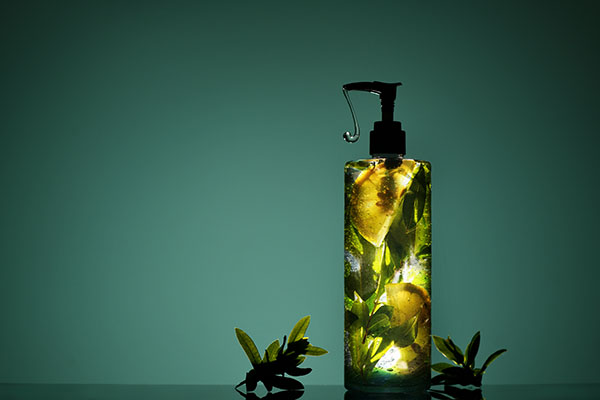 Parler
Parler Gab
Gab
- Iodopropynyl butylcarbamate (IPBC) is a common synthetic preservative in cosmetics (e.g., shampoos, nail polish) prized for its long-lasting antimicrobial properties. However, IPBC is linked to health risks like hormonal disruption, allergies and neurotoxicity.
- IPBC was banned by the EU in 2016 over safety fears, but its use is still allowed in the United States. Critics argue safety evaluations are outdated and industry-focused.
- IPBC is ubiquitous in water-based products like lotions and baby wipes and aerosols.
- Safer alternatives like phenoxyethanol or natural blends (citric acid, essential oils) exist, but many companies stick with IPBC due to its low cost and longevity.
- Avoid products with IPBC. Opt for "clean beauty" brands and reduce aerosol use. Systemic change requires advocating for stricter regulations.
IPBC: Industrial uses and toxicity
IPBC is an aromatic heterocyclic compound chemically synthesized for its ability to inhibit microbial activity even at low concentrations. IPBC's lasting antibacterial properties have made it a staple additive in a variety of products ranging from shampoos and lotions to nail polishes and facial moisturizers, particularly water-based formulations which are at high risk of microbial contamination. Despite its efficacy, IPBC has long been a subject of regulatory scrutiny. The compound’s safety profile is far from rosy. Studies have linked prolonged IPBC exposure to endocrine disruption, suggesting that the chemical interferes with hormone systems, disrupting reproductive health, thyroid function and immune system balance. Animal trials have also linked IPBC to liver toxicity and skin sensitization, noting that it causes allergic reactions in sensitive individuals. IPBC has also been classified as a potential neurotoxin, especially with prolonged exposure -- a finding corroborated in fish and amphibian models. Regulatory authorities in Europe have acted with caution. The European Union (EU) banned IPBC in cosmetics in 2016, citing concerns over its cumulative effects on the endocrine and immune systems. Meanwhile, in the U.S., the Food and Drug Administration (FDA) has imposed tight concentration limits but has not yet fully prohibited the ingredient. The Cosmetic Ingredient Review (CIR) Expert Panel, which typically evaluates product safety, has been criticized for downplaying IPBC's long-term risks and relying on outdated toxicity thresholds.Products that contain IPBC
IPBC is most commonly found in skincare products that require moisture retention, such as:- Body washes
- Facial cleansers
- Conditioners
- Shampoos
- Nail polish
- Makeup removers
- Baby wipes
- Children’s bubble baths
IPBC alternatives and detox methods
Manufacturers are not entirely without options. Phenoxyethanol, a milder antimicrobial with a lower toxicity profile, and preservative blends containing potassium sorbate or glycerin are becoming increasingly popular. However, phenoxyethanol comes with its own health risks. Natural alternatives, such as citric acid and essential oils, are considerably safer but provide short-term efficacy, hence why they're often paired with synthetic compounds for stability. But many companies still cling to IPBC despite its risks due to its low cost and longevity. Consumers seeking IPBC-free products must scrutinize labels. Look for "clean beauty" brands that use cold-pressed oils or fermentation-derived preservatives; though these tend to have shorter shelf lives, they're less likely to harm your health. There is no medically proven "detox" regimen for IPBC accumulation. As with most synthetic chemicals, the body metabolizes it through the liver, excreting most residues via urine within 24 to 48 hours. However, daily use of multiple IPBC-containing products could allow the chemical to accumulate in fat tissue. Consumers can mitigate risks by:- Avoiding products with IPBC.
- Choosing brands with transparent labeling and limited use of synthetic additives.
- Reducing reliance on aerosol sprays and pore-abrasive products that enhance absorption.
More related stories:
Sodium benzoate in personal care products: A threat to consumer health. Your skin absorbs toxins: Is your deodorant putting you at risk? The hidden dangers of phenoxyethanol in cosmetics and personal care products. Sources include: Brighteon.AI NaturalNews.com Brighteon.comGroundbreaking study uncovers nutrient gaps in Alzheimer’s brains
By Willow Tohi // Share
HHS Secretary Robert F. Kennedy Jr. cancels $500 million in mRNA vaccine projects
By Laura Harris // Share
Rethinking medical care with Dr. H. Gilbert Welch’s “Less Medicine, More Health”
By Kevin Hughes // Share
California wild hogs turn NEON BLUE, exposing hidden dangers of pesticide contamination
By Ava Grace // Share
Governments continue to obscure COVID-19 vaccine data amid rising concerns over excess deaths
By patricklewis // Share
Tech giant Microsoft backs EXTINCTION with its support of carbon capture programs
By ramontomeydw // Share
Germany to resume arms exports to Israel despite repeated ceasefire violations
By isabelle // Share










